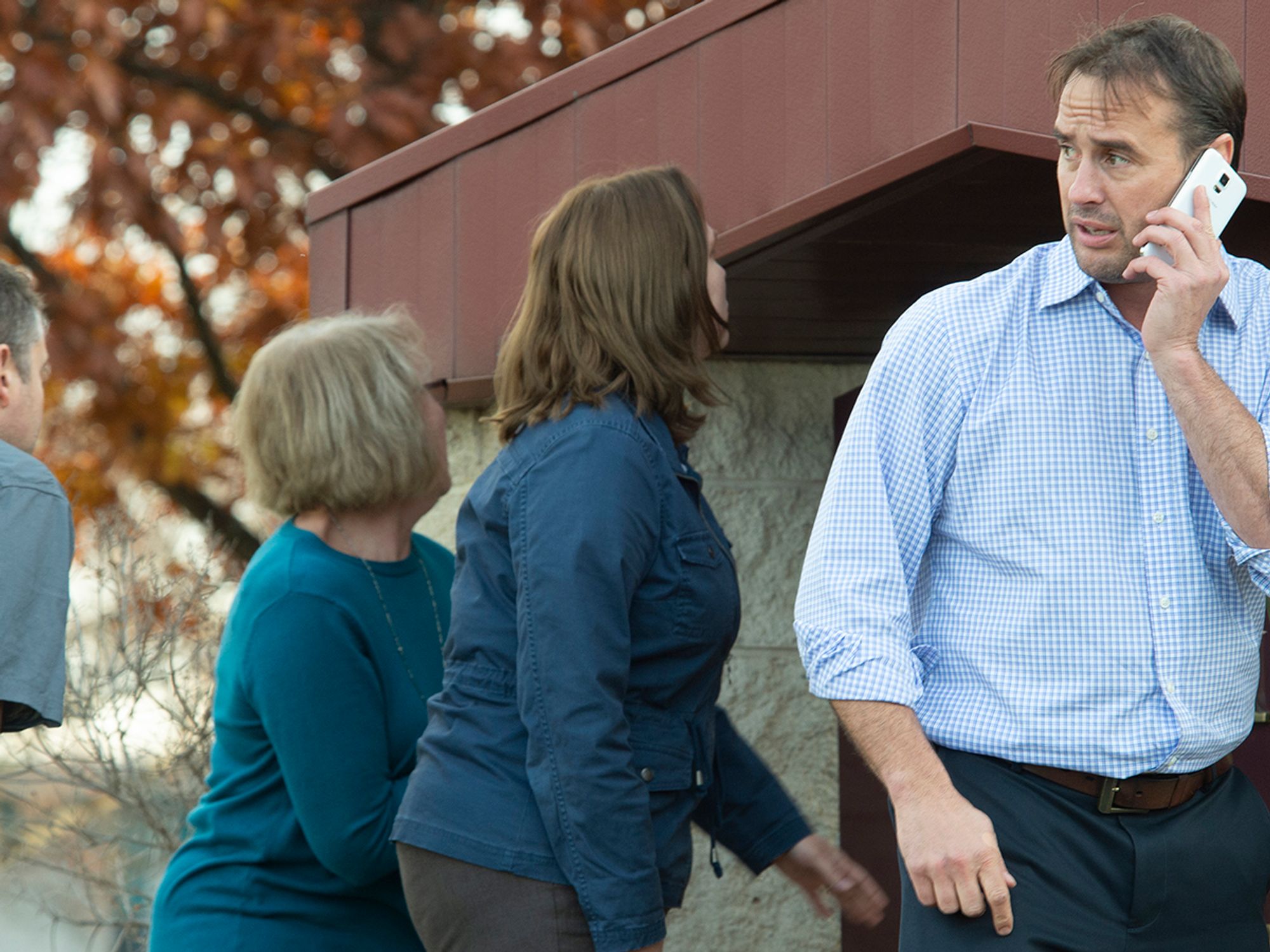Assessing the situation

- Planning escape routes from unfamiliar areas and maintaining situational awareness are important components of personal safety.
- People should be able to quickly and realistically assess their abilities in a crisis situation, then move past fear to action.
While at work, people are most familiar with the area surrounding their desks or workspaces. They likely know multiple routes out of the building and are familiar with nearby conference areas or break rooms.
However, when working or meeting in unfamiliar areas, it’s wise to take a minute and plan out possible courses of action if faced with an active threat. There are three important questions to ask in each unfamiliar location:
- What are the options for exiting the building? (Know more than one way out of the building);
- Which location(s) could be secured if the shooter tried to access them?; and
- What could be used for self-defense? (Look for items that could be used as weapons).
Everyone should try to have a true awareness of their surroundings at all times. Shooters look for people not paying attention and those unaware of what is going on.
In an active shooter situation, there is a high possibility the shooter is carrying multiple firearms, extra ammunition, and possibly even explosives. No one should go near or attempt to pick up any device or bag left behind by the attacker because it may detonate.
In all likelihood, the attack has been well planned out; shooters are typically familiar with the layout of the building, giving them an advantage over the police. Some shooters are suicidal, so finding an escape is not part of their plan. They may not stop the attack until confronted by police or civilians, or until they decide to stop on their own.
Surviving an active threat requires people to realistically assess their own abilities, including:
- How physically fit they are,
- Any injuries that could prevent them from executing a plan, and
- How well they can keep their composure.
It is important to move past fear quickly in order to make choices that lead to survival. Dropping to the ground or hiding under a table doesn’t work in this situation!
The number of casualties is determined by how quickly police arrive and how available targets are for the shooter. Since more than half of all active shootings end before law enforcement arrives, survival may depend on bystanders’ ability to assess themselves and the situation to determine the best course of action. These include:
- Avoiding the shooter,
- Denying the shooter access to them, or
- Defending themselves.
Doing nothing is not an option.
